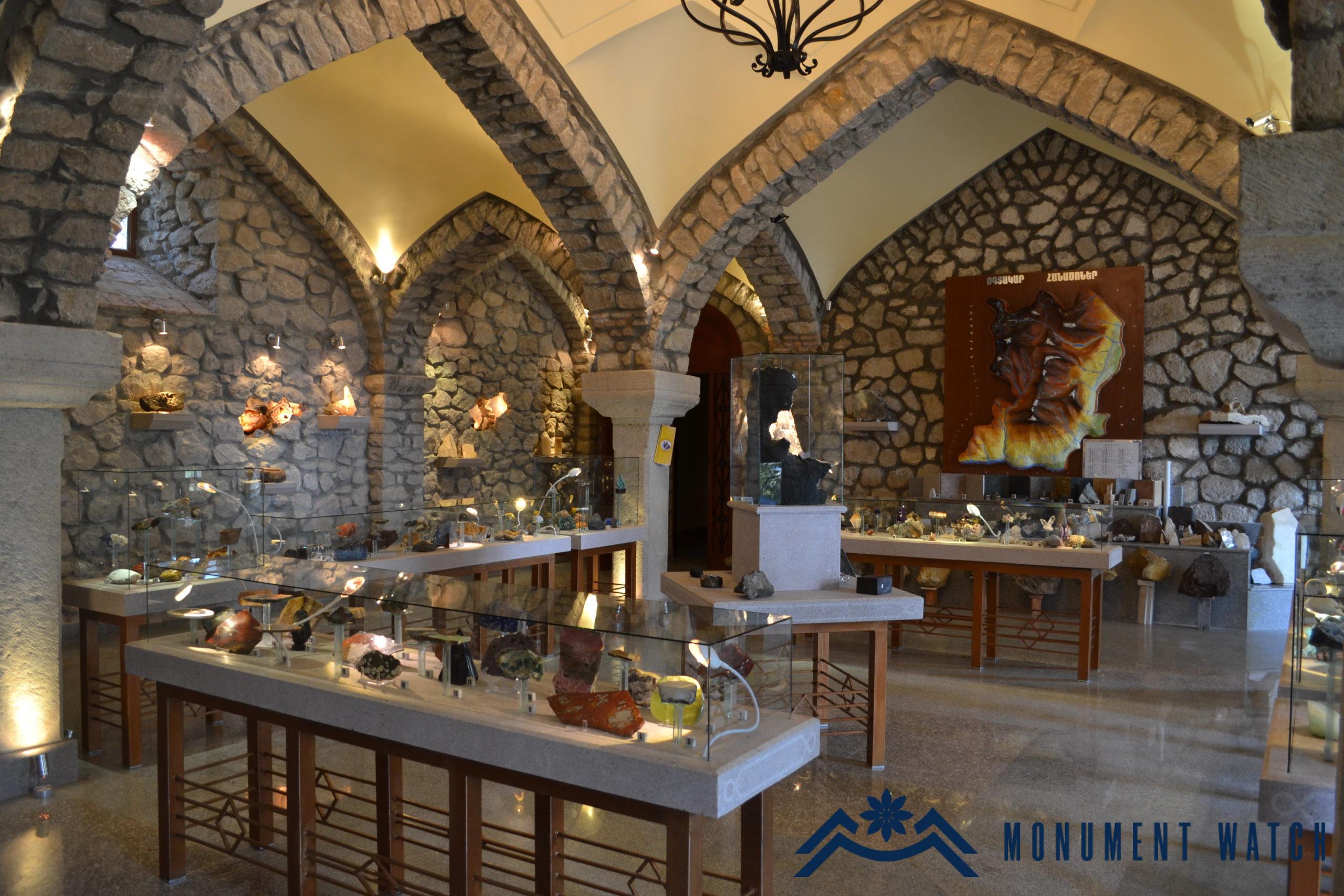Destruction of the State Geological Museum of Shushi
On August 18, 2021 Ararathau user shared a video on his Telegram channel that shows that at the Geological Museum of Shushi, which is under the control of Azerbaijan now, Azerbaijani soldiers spoil exhibits and museum values. The video also shows that the roof of the museum is destroyed, and its fragments covered the exhibits, showcases and other museum values preserved there.
The Shushi Geological Museum has been working since May 2014 and was named after Prof. Grigory Gabrielyants.
The museum displayed unique geological items collected from all over Artsakh, in particular, ores and other minerals. The collection of museum also had 400 samples (the oldest is 1.2 billion years old) from 48 different countries and 20 regions of the Russian Federation, mainly from the personal collection of Prof. G.A.Gabrielyants (Fig. 1, https://onewaytour.com/hy/sights-of-armenia/shushii-erkrabanakan-tangaran/)
During the 44-day war, the main fund of the museum was moved to a bomb shelter, but was not taken out from there, and therefore all the samples were left under the control of the military forces of Azerbaijan (https://hetq.am/hy/article/126646).
Our response
The Article 4 of the Hague Convention of 1954 for the “Protection of Cultural Property in the Event of Armed Conflict” prohibits any act of vandalism, theft, robbery or embezzlement and imposes an absolute ban on acts of retaliation against cultural property.
According to the First Protocol of the 1954 Hague Convention, it is forbidden to destroy cultural or spiritual values in the occupied territory.
The Second Hague Protocol of 1999 also ratifies that requirement and prohibits any act of hostility and retaliation against inheritance, which is classified as an international crime by Article 15.
Destruction of cultural property is prohibited by the Geneva Convention of August 12, 1949 for the Protection of War Victims, on the Laws and Customs of War, by four International conventions and protocols, and the relevant UN resolutions and treaties on the protection of human rights.
